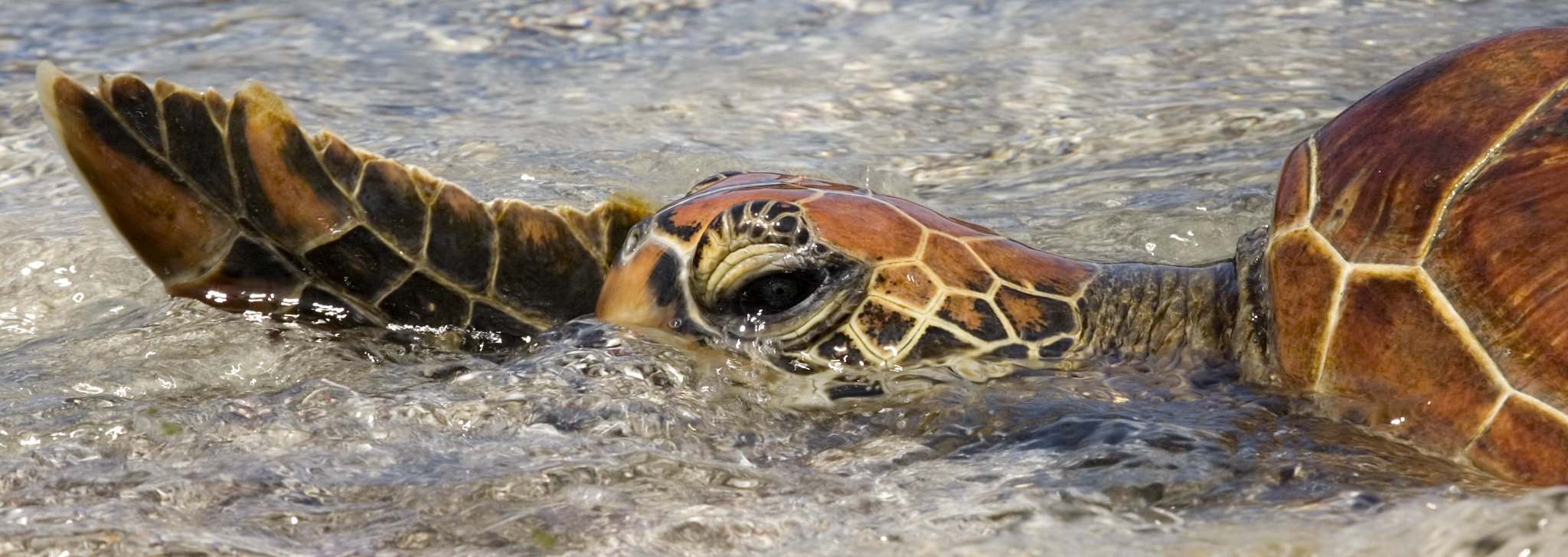Excerpt:
“Our research shows that the risk of extinction due to a lack of male green sea turtles may be compounded by contaminants that may also influence the sex ratio of developing green sea turtles, increasing the bias towards females,” (Arthur) Barraza says.
Green sea turtles are already an endangered species, mainly due to humans hunting them, harvesting their eggs, degrading their habitats, or entangling them in garbage of some kind.
But they also face another, more insidious threat from people: the loss of male hatchlings from the species.
You probably already know that this is partly caused by rising temperatures due to climate change – but a new study has now unveiled another human-caused problem driving this trend.
Certain pollutants may promote feminization in sea turtles, explains lead author Arthur Barraza, a toxicologist with the Australian Rivers Institute at Griffith University.
“Our research shows that the risk of extinction due to a lack of male green sea turtles may be compounded by contaminants that may also influence the sex ratio of developing green sea turtles, increasing the bias towards females,” Barraza says.
Green sea turtles (Chelonia mydas) have a vast geographical range, inhabiting tropical, subtropical, and temperate regions of the Atlantic, Pacific, and Indian oceans, as well as the Mediterranean Sea.
Male hatchlings are now heavily outnumbered by females overall, although the degree of imbalance varies in different parts of their range. In some warmer places like the northern Great Barrier Reef, researchers say, hundreds of female turtles are now born for every male.
That’s because sea turtles use temperature-dependent sex determination, meaning an embryo’s sex is determined by sand temperatures around its egg in the nest, with warmer sand favoring females. As temperatures rise around the world, male hatchlings are growing scarce.
But that’s not the only factor involved in determining sex, the latest research suggests.
In the new study, Barraza and his colleagues focused on green sea turtles at a long-term monitoring site on Heron Island, a small coral sand cay in the southern Great Barrier Reef.
Anywhere from 200 to 1,800 females nest there every year, the researchers report, and hatchlings born on the island have a more balanced sex ratio than those born closer to the equator, with only two or three females per male.
The researchers studied 17 clutches of green sea turtle eggs on the island, collecting them two hours after the mother laid them, then reburying them next to probes that would record hourly temperature data inside the nest and at the beach surface…
and in the Washington Post:
Pollution fueling a sex imbalance among endangered green sea turtles
and in the Washington Post:
Pollution, heavy metals could threaten endangered turtle populations by producing an excess of females
Also from ABC News: A look at threats to the sea turtle population
ABC News’ Rob Marciano takes a look at how the warming world is impacting the future of one of the world’s oldest animals.









